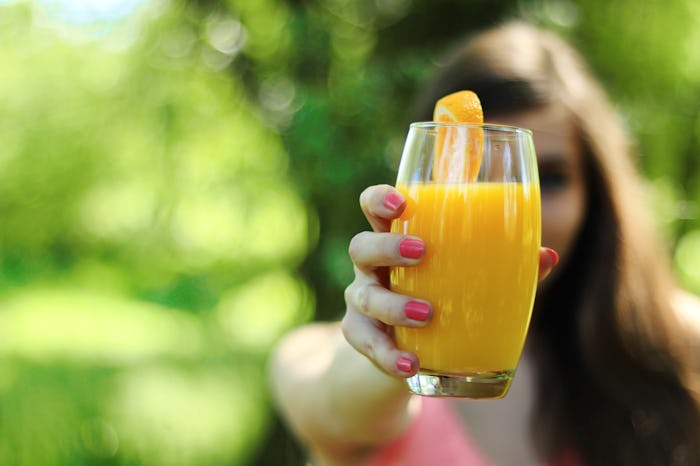Life

8 Foods With Vitamin D That You Already Have In The House
Most of the year, in much of the country, sun can be difficult to come by, meaning most people struggle to get their daily dose of vitamin D. Luckily, there are some foods with vitamin D that you probably already have in the house, or can get with a quick stop at the store.
In the summer, when days are often sunny and bright, your skin, liver, and kidneys can work together to produce fat-soluble vitamin D, according to Harvard Women's Health Watch. For most people in the United States, gloomier seasons prevent that same physiological process to take place. That, in turn, can result in low vitamin D levels in the body if you're not somehow supplementing what you're not getting from the sun.
According to the National Institutes of Health (NIH), there aren't very many foods that contain vitamin D naturally, but it can be (and is) added to some other foods, which means more places to find it. Of course, vitamin D supplements are also available and are another good way to up your dose of the vital nutrient. And believe me, it's vital According to Harvard Women's Health Watch, vitamin D is essential for bone health, and there is some evidence that getting enough vitamin D can help prevent some illnesses. Especially during the winter months, adding these eight common foods can help boost your vitamin D levels, resulting in a healthier you.
1Salmon
According to the NIH, a 3-ounce serving of cooked sockeye salmon contains 112 percent of your recommended vitamin D, making it an easy way to get more in your diet. And since frozen salmon filets thaw quickly, they are the perfect food to keep in your freezer.
2Milk
Vitamin D isn't naturally found in milk, but the Institute of Medicine, Food, and Nutrition Board noted, in the United States, nearly all of the milk supply is fortified with vitamin D. Splash some fortified milk in your morning coffee, on your oatmeal, or drink a glass with dinner.
3Canned Tuna
Registered dietitian Katherine Brooking told Cooking Light that three ounces of canned tuna contains about half of your daily vitamin D intake. Like frozen salmon, canned tuna is pretty convenient, and it's shelf-stable, meaning it's always there to solve your lunch or dinnertime crisis. Toss canned tuna with pasta, put it in a salad, the possibilities seem endless.
4Cereal
Cereal is a meal that takes really no thought at all (I'd be lying if I said I'd never eaten cereal for dinner). But to get your vitamin D, make sure it's fortified. According to the NIH, fortified cereals aren't all fortified at the same level, so check the label to determine how much you're really getting.
5Orange Juice
That morning glass of OJ just got a little bit better. According to the NIH, there's enough vitamin D in one cup of fortified orange juice to equal about 34 percent of your daily recommended value. Drink up.
6Eggs
Don't throw away those egg yolks when making your morning omelet. NIH noted that, in eggs, vitamin D is found in the yolks — not the whites — so scramble them up.
7Yogurt
Good news. Snacking on fortified yogurt can help up your vitamin D intake, according to the NIH. Like with cereal, yogurts are fortified with different amounts, so it's always a good idea to check the label.
8Mushrooms
Turns out, a team at Boston University School of Medicine found that sunlight-exposed mushrooms are a good source of vitamin D — just like when humans bask in the rays. The team concluded that mushrooms containing vitamin D2 (the variety that's produced as a result of sunlight exposure) can help adults up their vitamin D intakes.